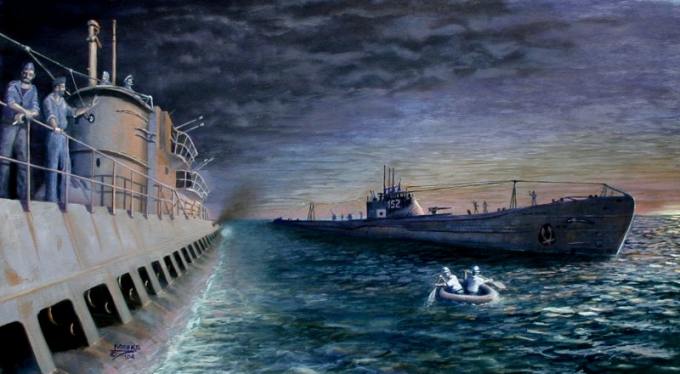During the Cold War, advanced deep water detection was almost an exclusively military preserve. That began to change in the early 1990s, when Paul R. Tidwell, a maritime researcher, used once highly secret military methods and gear to locate a mysterious Japanese submarine lost in the Atlantic during World War II.
In late 1994, Tidwell found the wreck of the Imperial Japanese Navy I-52, about three miles deep. It was an unusual vessel, not least because its final resting place in the Atlantic was thousands of miles away from Japan’s area of operations in Asia and the Pacific. The I-52 was also one of the biggest submarines of WWII. Even more significantly, when it sank, it was carrying more than two tons of gold, valued at about $95 million (USD) in 2019.

The Imperial Japanese Navy I-52
Germany and Japan, while formally allies in WWII, were more like co-belligerents who happened to be fighting separate wars against some of the same opponents at the same time. Vast distances separated Europe and the Asia-Pacific theaters of operation, and enemy navies dominated the sea lanes between Germany and Japan. Those factors made significant coordination, such as that between the Western Allies and the USSR, let alone that between the US and Britain, impractical. However, there was still some room for cooperation.
Japan was desperate for German technology, while Germany was desperate for raw materials, but Allied control of the waters in between eliminated bulk exchanges via surface transports. During WWI, while America was still neutral and selling goods and armaments to both sides, the Germans had partially gotten around the Entente’s dominance of the Atlantic by sending cargo submarines to the US. There, they were laden with rare and high-value goods, before returning to Germany.

During WWII, the Japanese took a page from Germany’s WWI playbook, and built large, cargo-carrying submarines. Designated the Type C3, Junsen Hei-gata Kai Sensuikan (“Cruiser Submarine Type C Modified”), and built in 1943 to 1944, these submarines were among the largest ever built to date, and among the most advanced underwater vessels of the war. Measuring over 350 feet in length and over 30 feet in the beam, the Type C3s had a cruising range of over 20,000 nautical miles. That made them well-suited for long-distance trade and intelligence missions between Germany and Japan.
The Japanese had initially planned to build twenty of these underwater behemoths, but as things turned out, they ended up building only three, with the I-52 being the first of the trio to enter operational service. Throughout the entire war, the Type C3s only carried out six long-distance missions known as Yanagi (“exchange”) between the Axis partners. Of the three cargo submarines, two were lost in action during the conflict, and only one survived the war.
The I-52 was laid down in March of 1942, and was commissioned in December 1943. Code named Momi, or “fir tree”, became more popularly known as the Golden Submarine because of her cargo when she went down. Measuring 356 feet long by 31 feet wide, the I-52 was powered by two electric diesel motors that gave her a 17.7-knot speed while surfaced and allowed her to do 6.5 knots underwater on battery power. She had a cruising range of 21,000 nautical miles at 16 knots and was depth tested for 328 feet. Her armament included six torpedo tubes, two 140 mm naval guns, and a pair of 25 mm antiaircraft guns. However, fighting was not her primary mission: she was built to carry cargo, of which she could fit 300 tons in her hold.

